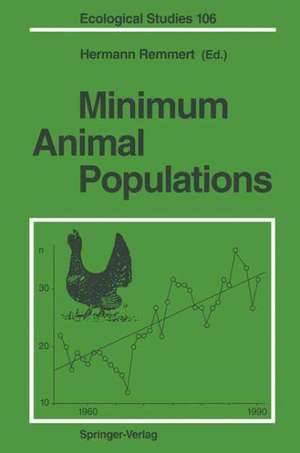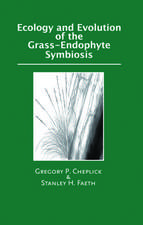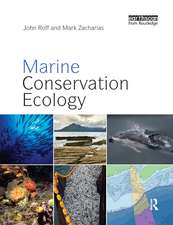Minimum Animal Populations: Ecological Studies, cartea 106
Editat de Hermann Remmerten Limba Engleză Paperback – 22 noi 2011
Din seria Ecological Studies
- 18%
 Preț: 1118.93 lei
Preț: 1118.93 lei -
 Preț: 553.72 lei
Preț: 553.72 lei - 18%
 Preț: 1680.55 lei
Preț: 1680.55 lei - 18%
 Preț: 1003.38 lei
Preț: 1003.38 lei - 20%
 Preț: 1004.71 lei
Preț: 1004.71 lei -
 Preț: 480.62 lei
Preț: 480.62 lei - 5%
 Preț: 752.26 lei
Preț: 752.26 lei - 15%
 Preț: 643.99 lei
Preț: 643.99 lei - 15%
 Preț: 644.18 lei
Preț: 644.18 lei - 15%
 Preț: 652.49 lei
Preț: 652.49 lei - 18%
 Preț: 789.83 lei
Preț: 789.83 lei -
 Preț: 382.36 lei
Preț: 382.36 lei - 15%
 Preț: 643.48 lei
Preț: 643.48 lei - 15%
 Preț: 646.30 lei
Preț: 646.30 lei -
 Preț: 384.86 lei
Preț: 384.86 lei - 18%
 Preț: 789.98 lei
Preț: 789.98 lei - 15%
 Preț: 645.14 lei
Preț: 645.14 lei - 15%
 Preț: 649.39 lei
Preț: 649.39 lei - 18%
 Preț: 1005.43 lei
Preț: 1005.43 lei - 18%
 Preț: 949.23 lei
Preț: 949.23 lei - 15%
 Preț: 649.54 lei
Preț: 649.54 lei - 15%
 Preț: 643.34 lei
Preț: 643.34 lei - 15%
 Preț: 649.71 lei
Preț: 649.71 lei - 15%
 Preț: 638.76 lei
Preț: 638.76 lei - 18%
 Preț: 957.62 lei
Preț: 957.62 lei - 18%
 Preț: 1235.25 lei
Preț: 1235.25 lei - 18%
 Preț: 962.18 lei
Preț: 962.18 lei - 18%
 Preț: 949.23 lei
Preț: 949.23 lei - 15%
 Preț: 660.68 lei
Preț: 660.68 lei -
 Preț: 397.76 lei
Preț: 397.76 lei - 15%
 Preț: 638.24 lei
Preț: 638.24 lei - 18%
 Preț: 942.31 lei
Preț: 942.31 lei - 18%
 Preț: 1232.57 lei
Preț: 1232.57 lei - 15%
 Preț: 651.34 lei
Preț: 651.34 lei - 18%
 Preț: 952.72 lei
Preț: 952.72 lei - 18%
 Preț: 1834.27 lei
Preț: 1834.27 lei - 18%
 Preț: 1229.10 lei
Preț: 1229.10 lei -
 Preț: 423.95 lei
Preț: 423.95 lei - 18%
 Preț: 948.92 lei
Preț: 948.92 lei
Preț: 634.32 lei
Preț vechi: 746.26 lei
-15% Nou
Puncte Express: 951
Preț estimativ în valută:
121.39€ • 131.81$ • 101.97£
121.39€ • 131.81$ • 101.97£
Carte tipărită la comandă
Livrare economică 22 aprilie-06 mai
Preluare comenzi: 021 569.72.76
Specificații
ISBN-13: 9783642782169
ISBN-10: 3642782167
Pagini: 172
Ilustrații: VII, 156 p. 2 illus. in color.
Dimensiuni: 155 x 235 x 9 mm
Greutate: 0.25 kg
Ediția:Softcover reprint of the original 1st ed. 1994
Editura: Springer Berlin, Heidelberg
Colecția Springer
Seria Ecological Studies
Locul publicării:Berlin, Heidelberg, Germany
ISBN-10: 3642782167
Pagini: 172
Ilustrații: VII, 156 p. 2 illus. in color.
Dimensiuni: 155 x 235 x 9 mm
Greutate: 0.25 kg
Ediția:Softcover reprint of the original 1st ed. 1994
Editura: Springer Berlin, Heidelberg
Colecția Springer
Seria Ecological Studies
Locul publicării:Berlin, Heidelberg, Germany
Public țintă
ResearchCuprins
1 Introduction.- 2 The Viability of Small Populations of Birds: an Empirical Investigation of Vulnerability.- 2.1 Introduction.- 2.2 The Theory of Small Population Extinctions.- 2.3 Evidence from Birds: Genetic Effects.- 2.4 Persistence of Small Populations.- 2.5 Conclusions.- References.- 3 Small World Populations in Birds: An Attempt of a Brief General Survey.- 3.1 Introduction.- 3.2 Material and Methods.- 3.3 Results and Conclusions.- References.- 4 Genetic, Demographic, Spatial, Environmental and Catastrophic Effects on the Survival Probability of Small Populations of Mammals.- 4.1 Introduction.- 4.2 Genetic Considerations.- 4.3 Demographic and Spatial Considerations.- 4.4 Environmental and Catastrophic Considerations.- 4.5 Conclusions.- References.- 5 On Micropopulations in Fish and Their Effects on Differentiation and Speciation.- 5.1 Introduction.- 5.2 Micropopulations in Anatolian Aphanius ssp. (Fam.: Cyprinodontidae).- 5.3 Intralacustrine Segregation Phenomena in East African Cichlids (Cichlidae).- 5.4 Conclusion.- References.- 6 Modelling Extinction and Survival of Small Populations.- 6.1 Introduction.- 6.2 Population Dynamics with Overlapping Generations.- 6.3 Population Dynamics with Non-Overlapping Generations.- 6.4 Conclusion.- References.- 7 “Very Small” Bird Populations in Amazonia.- 7.1 Introduction.- 7.2 “Very Small” Bird Populations in Amazonia.- 7.3 Summary.- References.- 8 Minimum Population of Clethrionomys glareolus (Schreber 1780).- 8.1 Introduction.- 8.2 Area, Material and Methods.- 8.3 Results.- 8.4 Discussion.- References.- 9 Minimum Populations of Carabid Beetles (Col., Carabidae).- 9.1 Introduction.- 9.2 Area and Methods.- 9.3 Results.- 9.4 Discussion.- References.- 10 To Survive or To Become Extinct: Small Populations of Tetraonidsin Central Europe.- 10.1 Introduction.- 10.2 Capercaillie.- 10.3 Black Grouse.- 10.4 Hazel Grouse.- 10.5 Conclusions.- References.















